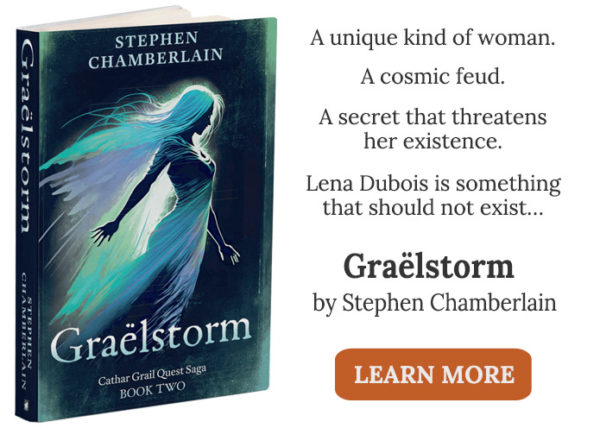“Every exit is an entry to somewhere else”
— Tom Stoppard
Each December, I look forward to the week between Christmas and New Year. The world closes in on itself. Everyday life pauses and routines are suspended, giving time for reflection. This lull is a liminal time — an in-between stage when we transition from a bygone year to the dawn of another. A whiff of transformation is in the air. People make resolutions to change old ways.
Liminal derives from the Latin word limen, meaning threshold, and liminality has to do with borders, margins, and the process of change. It describes a state of being poised on the cusp of two phases of time or circumstance. It speaks of the promise of things to come.
The metamorphosis from caterpillar to butterfly illustrates this concept well. Once the caterpillar spins its cocoon, it enters a stage when it transforms itself. Caterpillar cells deconstruct into a soup to be reincorporated into cells for the butterfly. At some point the insect is neither caterpillar nor butterfly. This is its in-between, or liminal, phase.
The Ring of Change
Implicit in liminality is the notion of impermanence — of a transition between locations, times, or stages in life. The past is behind; what is to come has not arrived, leaving you hovering in limbo. These liminal phases can be experienced during the adolescent stage between childhood and adulthood. Twilight is another liminal zone — the phase between day and night. Doors and windows frame liminal portals through which we pass from inside to outside, from here to there, from one reality to another, be it flying through a window to Peter Pan’s Neverland, passing through a wardrobe to C.S. Lewis’s Narnia, or walking through a looking glass to Alice’s Wonderland.
The realm of liminality is an abstract concept. But in that place, that moment or that phase, the order of things is suspended. And yet liminality is a dynamic stage — a tipping point. Whatever lies ahead when we cross the threshold, the world we know changes. Things are never as they were.
Thin Places and the Other Side
Our ancestors viewed border spaces and times as sacred. In caves and on hilltops, at solstices and equinoxes, the veil between the mundane and supernatural thinned, and cracks opened to mystical realms. No wonder these liminal conditions became associated with magic and superstition. There is strangeness about them.
Liminality is a recurring theme in literature. It lies at the heart of many a fairy story and provides a powerful backdrop for storytellers to enrich their tales. Fairies are liminal beings. Their world exists beyond human space-time, but they slip into our world to interact with humans. Werewolves and vampires are examples of other liminal creatures. Neither human nor animal, these hybrid beings embody a dangerous otherness. Like fairies, they have supernatural powers.
Time and again in fairy tales and myths, these liminal beings show up at borders — whether temporal, physical, or existential: at twilight and midnight; at birth, death and adolescence; at bridges and crossroads; or at the edge of wild woods where civilization ends and the savage begins. To engage the unpredictable nature of liminal creatures or to cross the liminal zone into their otherworld is to put oneself at risk of supernatural forces. Children were warned never to linger at twilight, in a doorway, or at crossroads. To do so was to become vulnerable to magic, curses, and trickery.
Liminal Rites of Passage
Liminality is a motif in broader genres of literature, especially in coming-of-age novels. These stories follow an adolescent’s quest for adult identity — a psychological, emotional, or spiritual journey often complicated with challenges such as race, class, and gender. Be it the Harry Potter series or the Twilight Saga, protagonists are outsiders at the start of the story. The plot will take them beyond their comfort zone. They will encounter dislocation followed by a purgatory of trials, sufferings, and revelations. But coming-of-age heroes will grow from the experience as they progress through the liminal phase, transitioning from immaturity to maturity, innocence to knowledge, idealism to realism. Whatever the outcome, they emerge changed people.
Character Arcs
A character arc is the transformation of a character over the course of a story. How they react to change makes a novel worth reading. Liminality often arrives through crisis, and it permeates my novel, Graëlfire. Each character is caught up in their own threshold phase, marked by ambiguity and inner conflict: Lena Dubois has a drifting soul that carries her to the frontier between life and death; Gideon Drude is a being trapped between two worlds and between his present and past. Even Raphaël Proctor and Count Angelo are liminal characters. Raphaël’s future hangs in limbo and hinges on the success of his quest, while Angelo is a spirit-being incarnated in a material Cosmos.
The storyline follows Lena, Raphaël, and Gideon on their quest for a Graëlstone. Plot twists happen at liminal times and in liminal places, compounding the influence of their own liminal stages on their progress. At the beginning of the story, we might not know how their character arcs end up — but change is unavoidable. Only Angelo remains unaltered. A representation of the trickster figure from folklore, he lives in a permanent liminal state. Liminality is his essence and his haven. It feeds his power.
Liminal phases, then, are tipping points that make change inevitable. As this year draws to its close and a new one begins, who knows what the future will bring. I’m reminded of words attributed to the English poet, William Blake: “In the universe, there are things that are known, and things that are unknown, and in between them, there are doors.” As characters in our own story, it’s not what happens when we cross a threshold that moulds us, but how we react to changes that come.

Stephen Chamberlain is the author of the fantasy novel Graëlfire. He draws inspiration from the impact of landscape on myth, and the association of liminality with the supernatural and magic. Stephen lives in Switzerland.




Thank you for this inspiring blog… i enjoyed and learned a lot about liminality.
Hello Mumzy,
Thank you for your kind words. I’m glad it helped.